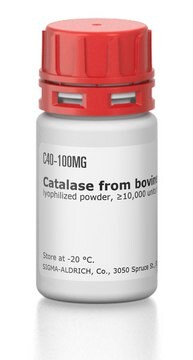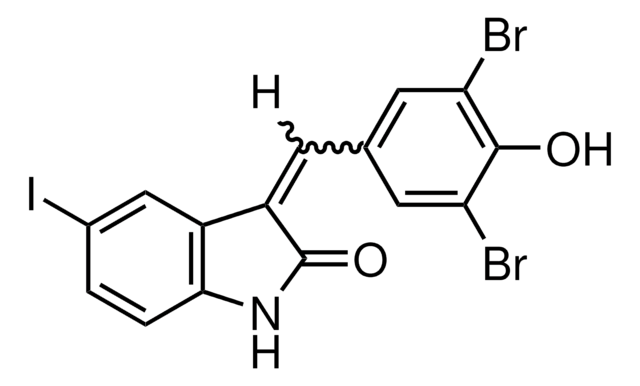30070
Cysteamine
≥98.0% (RT)
Synonym(s):
β-Mercaptoethylamine, 2-Aminoethanethiol, 2-Mercaptoethylamine, Decarboxycysteine, MEA, Thioethanolamine
About This Item
Recommended Products
Quality Level
Assay
≥98.0% (RT)
storage temp.
2-8°C
SMILES string
NCCS
InChI
1S/C2H7NS/c3-1-2-4/h4H,1-3H2
InChI key
UFULAYFCSOUIOV-UHFFFAOYSA-N
Looking for similar products? Visit Product Comparison Guide
Related Categories
Application
- in the preparation of cysteamine modified gold nanoparticles (AuNP)
- in the fabrication of SU-8 microrods, where in, the amine group of cysteamine reacts with the unreacted epoxide rings present on the surface of the particles, thereby opening it and forming a covalent bond
- to enhance in vitro development of porcine oocytes matured and fertilized in vitro
- in a study to demonstrate the depletion effect of cysteamine on cystinotic leucocyte granular fractions of cystine by disulphide interchange
- as a radioprotector
- to administer subcutaneously in rats to study its blocking effect on somatostatin secretion without modifying the pancreatic insulin or glucagon content
- as a scavenger in electrophoretic gels (acetic acid/urea gels)
Biochem/physiol Actions
Signal Word
Warning
Hazard Statements
Precautionary Statements
Hazard Classifications
Acute Tox. 4 Oral - Eye Irrit. 2 - Skin Irrit. 2 - STOT SE 3
Target Organs
Respiratory system
Storage Class Code
11 - Combustible Solids
WGK
WGK 3
Flash Point(F)
Not applicable
Flash Point(C)
Not applicable
Personal Protective Equipment
Regulatory Listings
Regulatory Listings are mainly provided for chemical products. Only limited information can be provided here for non-chemical products. No entry means none of the components are listed. It is the user’s obligation to ensure the safe and legal use of the product.
ISHL Indicated Name
Substances Subject to be Indicated Names
ISHL Notified Names
Substances Subject to be Notified Names
JAN Code
30070-10G:
30070-INTR:
30070-BULK:
30070-50G:
30070-VAR:
Certificates of Analysis (COA)
Search for Certificates of Analysis (COA) by entering the products Lot/Batch Number. Lot and Batch Numbers can be found on a product’s label following the words ‘Lot’ or ‘Batch’.
Already Own This Product?
Find documentation for the products that you have recently purchased in the Document Library.
Customers Also Viewed
Our team of scientists has experience in all areas of research including Life Science, Material Science, Chemical Synthesis, Chromatography, Analytical and many others.
Contact Technical Service









